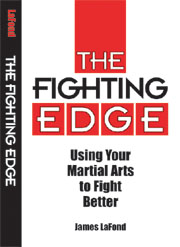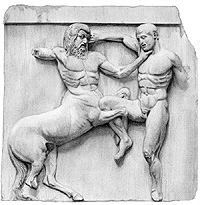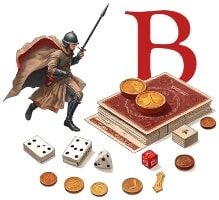I now spend most of my stick fighting time per year sparring [over 200 hours] as opposed to competing [under 2 hours]. The fighters I work with are, or have been, taught by others. I have evolved into a sparring partner/applications coach. Below are the five methods I use. To me fighting is more psychological than physical, with the trainer’s greatest challenge being the task of helping his fighter relax under pressure so that he can learn and execute his skill set. I have noticed five general levels of training anxiety over the years, and have, along with Charles, adapted some boxing sparring methods to address them. The first big barrier that needs breaking down is the idea that sparring = fighting so common in the martial arts world. Sparring is practice for fighting, and I prefer to graduate it.
Coach Sparring
This is ideal for the new fighter, and for the self-defense student. This is really where you find out if they should be a combatant or remain a practitioner. I only tap their gloves and head piece while I give them verbal encouragement and encourage them to use the techniques they have trained. The purpose of this is to get them relaxed, to wash away that deep anxiety that comes with handling weapons in a contact situation. I have done this safely with senior citizens, non-combatant women, and children, and have never hurt any of them. The only people I have a problem with at this level is hyper-aggressive athletes and young men with big egos.
If their instructor is present it is best if they use this opportunity to observe their student with an eye toward future lessons. Interrupting a student at this phase is counterproductive. This is a psychological immersion method that is more effective the longer it is unbroken.
Instructional Sparring
Once a student or fighter has gotten relaxed with the coach sparring it is good to progress to technical work. I like to keep quiet as I spar with an eye toward drawing my partner into action. The action is stopped at crucial points to review a good or bad technique or tactic. This helps the fighter deal with the stress induced by over-thinking as he fights. This is where he learns how to absorb and prosecute a fight plan in micro-bits, letting his instructor or trainer [the sparring partner in cases when the instructor is absent] take on the planning burden, as he learns how to execute under moderate pressure. The contact level goes up a little here, but no power shots are used. I only use my forearm muscles for scoring at this level and pull any clean shot when I can do so without injuring my wrist.
This works best when the instructor is present to communicate these issues in a coaching capacity; calling a halt, stepping in to illustrate a point, and restarting the action.
Work Sparring
This is the meat of a fighter’s psychological conditioning process and the moderate pressure environment where new skills may be experimented with. It is the time for me to role play different styles if my partner’s ego permits it. Working the clinch with a 400 pound wrestler is something I will only do if I trust him. This is where a young fighter’s maturity is tested, and an old fighter’s injuries are worked around. This is a moderate contact exercise that works better the less ego is involved. This helps the fighter break the adaptability barrier, when he gets tense about stepping outside of his safe zone. The contact level here remains moderate with the focus on combinations and chaining combinations. The hardest point with most young fighters at this stage is to get them away from ‘loading up’ on one big shot.
This is the best type of sparring to do when the instructor wants to coach from ringside without stopping the action.
Grind Sparring
This is the level necessary to condition a fighter for competition, with the contact level amped up to the high level of moderate. You let the sticks go as fast as they can without putting arm or hip into it. But you don’t pull a shot if it is going to foul up a combination. For instance, a leg shot in the middle of a U-combination will be dragged through like a blade rather than driven through the leg like a stick. Hand shots are pretty much impossible to pull at this level.
It is a good idea to agree on a theme [close range, mid-range, long-range, range-flow] or set a goal for the fighter, like the landing of a certain combo. A ‘role’ may be decided on for me: perhaps attempting to enter, looking for the disarm, sniping, etc. It is important to keep the power down so that pace-setting, rhythm-breaking, and pace-pushing can be practiced. This is where the fighter becomes relaxed with the specter of fatigue and the pressure of attrition; where he learns to sense his opponent’s anxiety and fatigue, and begins developing his killer instincts.
It is very important for the instructor to watch this without interrupting it, but instructing in between rounds, as this focuses on larger scale adaptations than instructional sparring, like the type of advice that is given between rounds and before fights.
Fight Sparring
This is a fight in all but name where power will be used. It is the final stage in the fighter’s relaxation progression, where he learns to deal with the stifling effects of power. Many, many good fighters fail to employ techniques and tactics that they have tested in light and moderate sparring, when sticks start to whistle and the smell of burning rattan lets them know on a gut level what the price of a mistake is. This differs from a fight only in the fact that we both look out for one another’s and safety, in all aspects from gear retention to injury, and that we do not go for the knockout. This is where the fighter learns to know when his man is hurt or ready to fall, and hones his killer instinct. By learning when to stop sparring to save your partner from an injury, you learn when to finish your opponent in a fight.
Fight sparring, if it is your primary method, will tend to develop dangerous fighters, but not round them out well, as they will tend not to experiment with new or underdeveloped skills when working with fighters at and above their own level for fear of injury.
The proper role of the instructor in this varies according to his preference: referee, judge, corner man.
Conclusion
I work all of these sparring levels with people I coach and train with. When I am injured I have my top fighter spar with me like this, working with and coaching me while I try to adapt to the limitation of the moment.
If you want me to spar with your people I suggest printing this out as a guide and breaking your students into groups according to the sparring level that is right for them. When I am done sparring with anyone, even a guy much better than I, I always review their work when we are done. As long as I am fit and healthy enough to do this I see it as my proper role.











